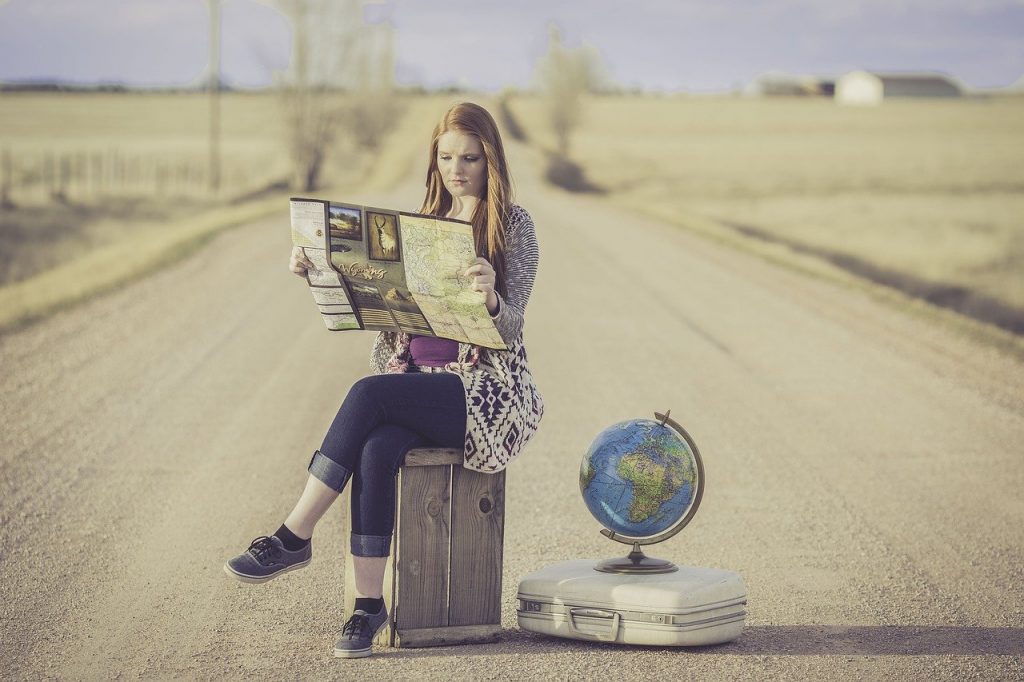“I was here, I saw this and it mattered to me.”
How many times have you been seduced by reading an article on the 10 best things to do at the destination you always wanted to see? The flawless writing full of perfectly chosen adjectives, carefully punctuated into long, tantalising sentences made you feel ready to devour all 10 items on the list – amazing UNESCO sights, cruises on a magnificent river, a golden tan on a golden beach, deliciously cooked food or a trip across a desert… half way across the globe, killing a little of what is left of our precious world as we go.
Once you have satisfied the urge to show your latest travel achievements on your social media accounts and retire for the night, you can sleep with an angelic glow over your contented head. But have you noticed anything else?
Public transport for example? Or the lack of it. Like most of us, you prefer travelling in a car that you certainly can’t afford back home, with a guide and driver.
How about that sea fish you tasted at the famous restaurant listed as number 1 on the extravagance list? Have you actually noticed the country is land-locked and the sea fish has probably flown a longer distance than you? Or did you notice any locals enjoying the deliciously prepared sea creature? Of course not, because the average locals don’t have enough money to pay the bills let alone enjoy the best 10 from the list which you salivated over back home.
You may find that the UNESCO site listed as number 3, for which you booked a car and driver to take you, is over commercialised and hence not “insta friendly”. The fact you failed to notice was that due to mass tourism it has been refurbished more times in the last century then in its whole existence. But who cares? You made your peace by posting your inconclusive findings on your social media profiles and made a lot of interactions, which is good for your quest to become an influencer.
The luxury cruise with amenities better than at your own house, which you booked to visit the fine wineries along the river, is a five-star floating polluter but nobody dares to say it. The wine tastes good!
That road trip across the shrinking desert is covered with rubbish left by overzealous travellers who, luckily, you managed to avoid with your photographic skills. That selfie with the amazing background of rocks and through a filter looked like the perfect way to wish good morning to your followers on the other side of the globe.
Apart from endless chasing, these “10 best” lists also give the wrong impression of the destinations! The latest example I come across is an article in an internationally recognised newspaper’s travel section, giving a list of what to do in 36 hours at one of the capital cities of Europe. Within 36 hours the writer suggested a visit to a mere three sights and the rest around new fancy restaurants where the cost of the average meal is equal to the monthly salary of the average local. The city is blessed with a history longer than most, and so to suggest only 3 sights is either displaying a deep ignorance of the destination or is purely to make money by listing expensive restaurants. You decide!
Who sets trends in travel? Why do we have to follow them? Does the travel industry need a revolution? A little bit of transparency wouldn’t be amiss. Don’t you think?
In May last year I decided to volunteer at a refugee centre in East Europe. It was just my luck that it was Ramadan and none of the students turned up but I met a very nice bunch of fellow volunteers from the USA. They are travelling through Europe and volunteering at the same time. It’s an excellent way of getting close to real issues of today’s very messy world.
My question and my travel anxiety are very simple: does holiday/travel have to be a hunting game of 10 whatever best, only to be able to brag about them back home and display them on social media platforms.
Yes, we have been somewhere on the list and we have a very good insta photo to prove it. But did we actually enjoy it? Did we embrace just a little bit of local life?
Top 10, 10 best, 15 must see, 8 must do, 20 things to do is the concept of whole websites, travel businesses are set up on them. In the process of salivating, wannabe travellers forget that writers have been paid a commission to feature these lists and that sometimes they haven’t even been there. The telling sign is the address of each establishment listed at the end of each entry or image credit given to a different person, not to the writer of the article.
Who is to blame? Travellers looking for a unique experience? Businesses wanting to make money on clickable articles? Wannabe writers, pretending to be travellers, selling fog.
We are all in it! And it backfires on the whole concept of travelling. While we chase all these never-ending lists, like a holy grail, across the globe, we forget the basic concept of travelling which is different for each of us, like happiness. Mine is to take a camera, not a mobile, and a map, and with my luck it usually turns out not to be in English, which I use to discover the city I visit. Yes, I get lost, endlessly walking up and down uncharted territory, swearing and cursing for being stupid but my God, do I see and experience much more than any travel guide can squeeze into 10 of whatever they think is the best. I go back to the hotel room invigorated, hungry and covered in blisters but happy to write pages and pages in my diary.












